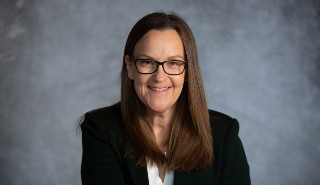As the University shares its latest gender pay gap report, Professor Elizabeth McCrum, Pro-Vice-Chancellor and Champion for Sex Equality at the University Executive Board (UEB), discusses the ongoing efforts to address this crucial issue.
I am delighted to announce that our gender pay gap has decreased to a mean of 14.5% in 2024, down from 17% in 2023. However, the median has slightly risen to 16.1%, compared to 15.7% last year.
We remain committed to making further improvements to close the gap. It is essential that we continue our efforts and not settle for progress that has already been made.
As I mentioned in last year’s update, we have implemented various actions aimed at creating a noticeable positive impact over the next two to three years.
These initiatives have included hosting focus groups with Professional Services colleagues to explore career advancement, updating our recruitment and selection training, and working towards achieving equal representation of female and male professors.
We believe these efforts have contributed positively, as reflected in the 2024 mean figure, and we hope to see continued improvements when we assess our data for 2025.
In our 2024 statistics, the percentage of female professors at Reading was 36.1%, a slight decrease of 0.9% from the previous year, while the proportion of associate professors rose to 57.3%, an increase of just over 2%. Despite the minor decline, we surpass the sector average of 32%, and we will persistently strive for a gender-balanced professoriate with at least 45% representation from either gender.
As we reinstate our progression processes this year, we will continually evaluate our progress.
Collaborative efforts with the Women@Reading and Parent & Family networks remain strong, offering various opportunities to empower women at the University in their professional journeys.
Recently, the Women@Reading network hosted a panel discussion on Women in Leadership, organized by the Women in Business Society, and collaborated with the BAME network to facilitate a Professional Services Career Conversation, featuring female leaders who shared valuable stories, insights, and advice on career development.
Looking Ahead
Last summer, we took the time to review our progress and explore proactive strategies for further reducing our pay gap. This reflection has guided our initiatives for the current year.
I am particularly excited to collaborate with HR and the Women@Reading network to engage a group of colleagues who may be more adversely affected by the pay gap. We will listen to their perspectives on progression opportunities and the challenges they encounter.
Their insights will be instrumental in shaping our support strategies.
Ongoing Initiatives
We are dedicated to supporting women in their careers at Reading through a variety of development opportunities, including a mix of online e-learning modules and in-person training programs such as Advance HE’s Aurora leadership program and the Springboard development program.
We are also preparing to submit our renewal application for the Athena Swan Silver award in July 2025, which will showcase our commitment to advancing women in both academic and professional service positions.
Understanding the Context
As a public sector organization, we are mandated to calculate and report on our gender pay gap annually based on data from March 31. This complex and detailed task must be completed within a specified timeline for government reporting.
It is crucial to clarify that our gender pay gap statistics differ from equal pay, as we maintain stringent processes to ensure men and women receive equal pay for equal work.
Gender pay gap figures reflect the average pay disparity across all male and female employees and often indicate occupational segregation, where specific roles attract more men or women, regardless of our initiatives.
Our figures also account for the challenges of employing a significant number of staff directly, including those in lower-paid roles, as well as incorporating student employment through Campus Jobs — a majority of which have been female in recent years. This dynamic can elevate our mean and median figures by 1-2%.
This context is essential for understanding our statistics. Though it complicates direct comparisons with other institutions, we recognize that our pay gap remains substantial regardless of these factors, and we are determined to continue our proactive measures.
Much remains to be done, but we are making strides in the right direction. I look forward to sharing further positive developments in the coming year.


